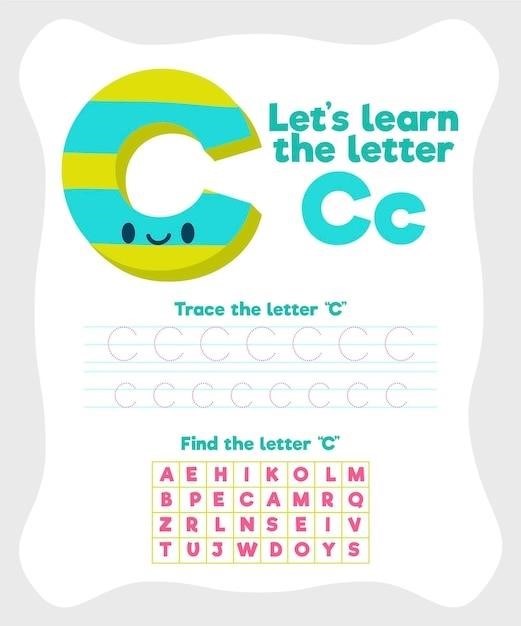Kenmore Washer Model 110 Manual PDF⁚ A Guide to Finding and Using Your Manual
This guide will help you locate and use the Kenmore Washer Model 110 manual, a valuable resource for understanding your appliance’s features, troubleshooting issues, and performing routine maintenance.
Introduction
The Kenmore Washer Model 110 manual is an essential companion for any owner of this appliance. It contains a wealth of information that can help you understand your washer’s features, troubleshoot any issues, and perform routine maintenance. This manual is a valuable resource, offering a comprehensive guide to using your Kenmore washer safely and efficiently.
Whether you’re a seasoned washer user or a first-time appliance owner, the Kenmore Washer Model 110 manual can help you get the most out of your appliance. It covers everything from warranty information and safety instructions to product features and troubleshooting tips. You’ll also find a parts list, installation instructions, and maintenance advice, all designed to help you keep your washer running smoothly for years to come.
Where to Find Your Kenmore Washer Model 110 Manual
Finding your Kenmore Washer Model 110 manual is easier than you might think. Several reliable resources are available online, offering a convenient way to access the information you need. You can find your manual through various sources, including⁚
• Sears Parts Direct⁚ This website is a great starting point for finding Kenmore appliance manuals. Enter your model number, and you’ll likely find a downloadable PDF version of the manual.
• ManualsOnline⁚ This website is a comprehensive resource for finding user manuals for various appliances, including Kenmore washers. Search for your model number, and you’ll find the manual if it’s available.
• Kenmore Website⁚ Kenmore’s website offers a customer support section where you can search for appliance manuals. Enter your model number, and you may find the manual you need.
Sears Parts Direct
Sears Parts Direct is a highly recommended resource for locating your Kenmore Washer Model 110 manual. This comprehensive website provides a user-friendly interface for searching for manuals and parts for a wide array of appliances. To access your manual, simply navigate to the Sears Parts Direct website and enter your Kenmore washer’s model number in the search bar. The site will then display a list of relevant results, including your user manual, if available. You’ll likely find a downloadable PDF version of the manual, allowing you to easily access and save it for future reference.
ManualsOnline
Another excellent source for finding your Kenmore Washer Model 110 manual is ManualsOnline. This website boasts a vast library of user manuals for various appliances, including laundry machines. To locate your manual, simply visit the ManualsOnline website and utilize the search bar. Enter your Kenmore washer’s model number, and the site will present you with a list of matching results. If your manual is available, you’ll likely find a downloadable PDF version, allowing you to access and save it for future reference. ManualsOnline is a valuable resource for finding comprehensive user guides for a wide range of appliances.
Kenmore Website
The official Kenmore website is another excellent resource for finding your Kenmore Washer Model 110 manual. Visit the Kenmore website and navigate to the “Customer Care” section. You’ll typically find a link or a search bar where you can enter your appliance’s model number. The website will then display a list of available documents, including user manuals, installation guides, and troubleshooting tips. If your Kenmore Washer Model 110 manual is available online, you’ll be able to download it in PDF format. The Kenmore website offers a convenient platform for accessing information specific to your appliance, ensuring you have the necessary resources for proper operation and maintenance.
Kenmore Washer Model 110 Manual Contents
The Kenmore Washer Model 110 manual is a comprehensive guide designed to provide you with all the information you need to use and maintain your appliance effectively. It includes detailed instructions on various aspects of your washer, covering everything from basic operation and cycle selection to advanced features and troubleshooting tips. Within the manual, you’ll find sections dedicated to warranty information, safety instructions, product features, a troubleshooting guide, a parts list, installation instructions, maintenance tips, and more. These sections are carefully organized to provide you with easy access to the information you need, empowering you to utilize your Kenmore washer to its full potential.
Warranty Information
The Kenmore Washer Model 110 manual provides essential information about your appliance’s warranty coverage. This section outlines the terms and conditions of the warranty, including the duration of coverage, parts and labor included, and any exclusions. It’s crucial to carefully review this information to understand your rights and responsibilities as a consumer. The warranty details might vary depending on the specific model and purchase date, so it’s best to refer to the manual for the most up-to-date information. Understanding the warranty terms can help you navigate any potential issues or repairs that may arise during the warranty period.
Safety Instructions
The Kenmore Washer Model 110 manual emphasizes safety as a top priority. This section outlines crucial safety guidelines for operating and maintaining your washer, ensuring a safe and enjoyable experience. It covers important aspects like proper electrical connections, water supply and drainage procedures, and handling sharp objects. The manual also provides instructions on preventing accidents, such as avoiding overloading the washer, keeping children away from the appliance, and disconnecting the power supply during repairs or cleaning. By adhering to these safety instructions, you can minimize the risk of injuries and ensure the long-term functionality of your washer.
Product Features
The Kenmore Washer Model 110 manual highlights a range of features designed to enhance your laundry experience. From its spacious capacity to its advanced wash cycles, the manual details each feature and its benefits. You’ll find information on the various wash cycles, including delicate, heavy-duty, and quick wash options. The manual also explains how to use the different water levels, temperature settings, and spin speeds for optimal cleaning and fabric care. Additional features like the automatic dispenser, lint filter, and cycle progress indicator are also discussed, allowing you to fully understand and utilize your washer’s capabilities.
Troubleshooting Guide
The Kenmore Washer Model 110 manual includes a comprehensive troubleshooting guide to assist you in resolving common issues. This section covers a range of problems, such as noisy operation, leaking, improper water filling, and malfunctioning controls. For each issue, the manual provides detailed instructions on how to diagnose the problem and potential solutions. It may suggest checking connections, clearing obstructions, adjusting settings, or identifying faulty components. The guide also emphasizes safety precautions when troubleshooting, ensuring you can address issues effectively and safely. By following the steps outlined in the troubleshooting guide, you can identify and resolve most common washer problems efficiently.
Parts List
The Kenmore Washer Model 110 manual provides a comprehensive parts list that details all the components that make up your washing machine. This list is organized by category, including the washer’s tub, agitator, motor, pump, controls, hoses, and other accessories. Each part is listed with its corresponding part number, allowing you to easily identify and order replacement components if needed. The manual also includes diagrams and descriptions of each part, providing a clear visual representation of the washer’s internal structure. This section is particularly helpful for DIY repairs, as it allows you to identify the specific component that needs to be replaced and ensure you order the correct part.
Installation Instructions
The Kenmore Washer Model 110 manual contains detailed installation instructions that guide you through the process of setting up your new washing machine. These instructions cover everything from unpacking the appliance and preparing the location to connecting the water supply, drain hose, and electrical outlet. The manual also provides important safety precautions to ensure a safe and successful installation. It emphasizes the need for proper leveling, securing the washer, and avoiding overloading the electrical circuit. By following the step-by-step instructions in the manual, you can ensure that your Kenmore washer is installed correctly and ready to use.

Maintenance Tips
The Kenmore Washer Model 110 manual provides essential maintenance tips to keep your appliance running smoothly and efficiently. These tips include regular cleaning of the washer’s exterior, interior, and components. The manual recommends using a washing machine cleaner to remove detergent residue, dirt, and mildew buildup. It also emphasizes the importance of checking and cleaning the drain hose, water inlet hoses, and lint filter. The manual advises against overloading the washer and using the appropriate detergent for each load. Additionally, it suggests periodically checking the washer’s leveling and making adjustments as needed. By following these simple maintenance practices, you can prolong the life of your Kenmore washer and ensure optimal performance.
Kenmore Washer Model 110 Manual⁚ A Valuable Resource
The Kenmore Washer Model 110 manual serves as a comprehensive guide for understanding your appliance’s operation, maintenance, and troubleshooting. It provides detailed information about warranty coverage, safety instructions, product features, and a troubleshooting guide. The manual also includes a parts list, installation instructions, and maintenance tips. This resource can be immensely helpful in maximizing the lifespan of your Kenmore washer, ensuring its proper functioning, and addressing any potential issues that may arise. Whether you need to understand the different wash cycles, resolve a minor malfunction, or perform routine maintenance, the manual provides valuable insights and practical guidance.

Having access to the Kenmore Washer Model 110 manual is essential for any owner. It empowers you to understand the nuances of your appliance, troubleshoot common issues, and maintain its optimal performance. Whether you’re a seasoned user or a newcomer to this model, the manual offers valuable information to enhance your experience. From warranty details to troubleshooting tips, the manual acts as a comprehensive guide to ensure your Kenmore washer operates smoothly and efficiently for years to come. Remember, a well-maintained appliance is a happy appliance, and the manual is your key to achieving that happiness.


















